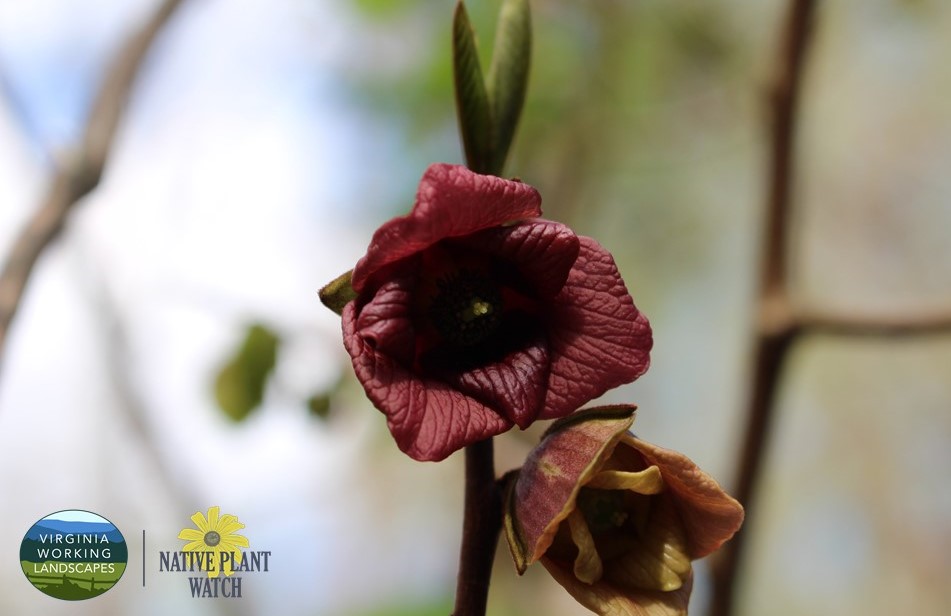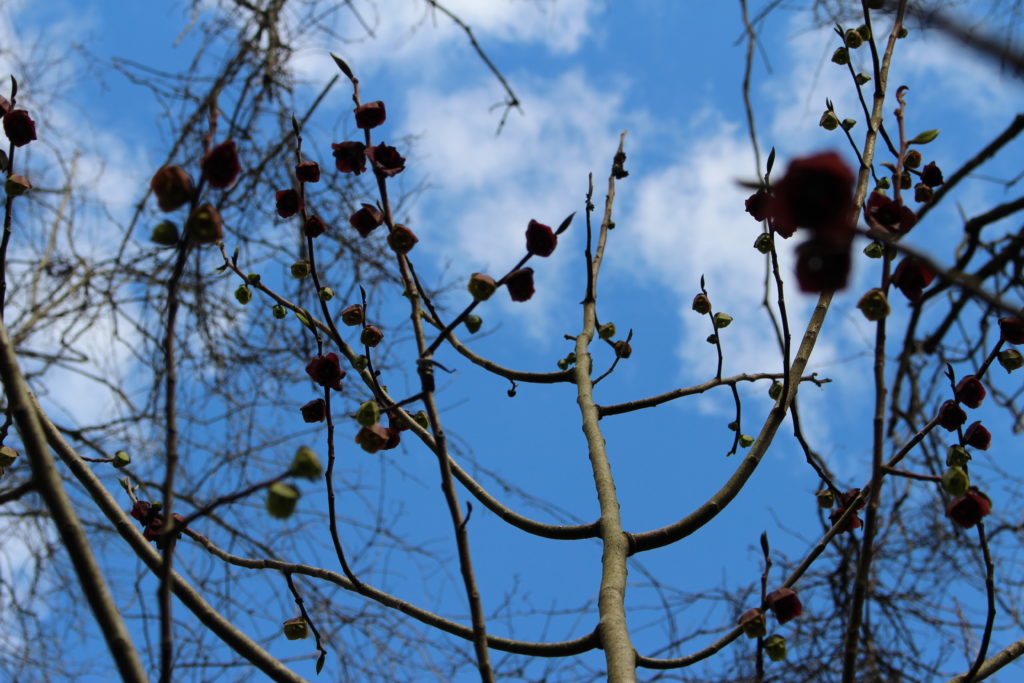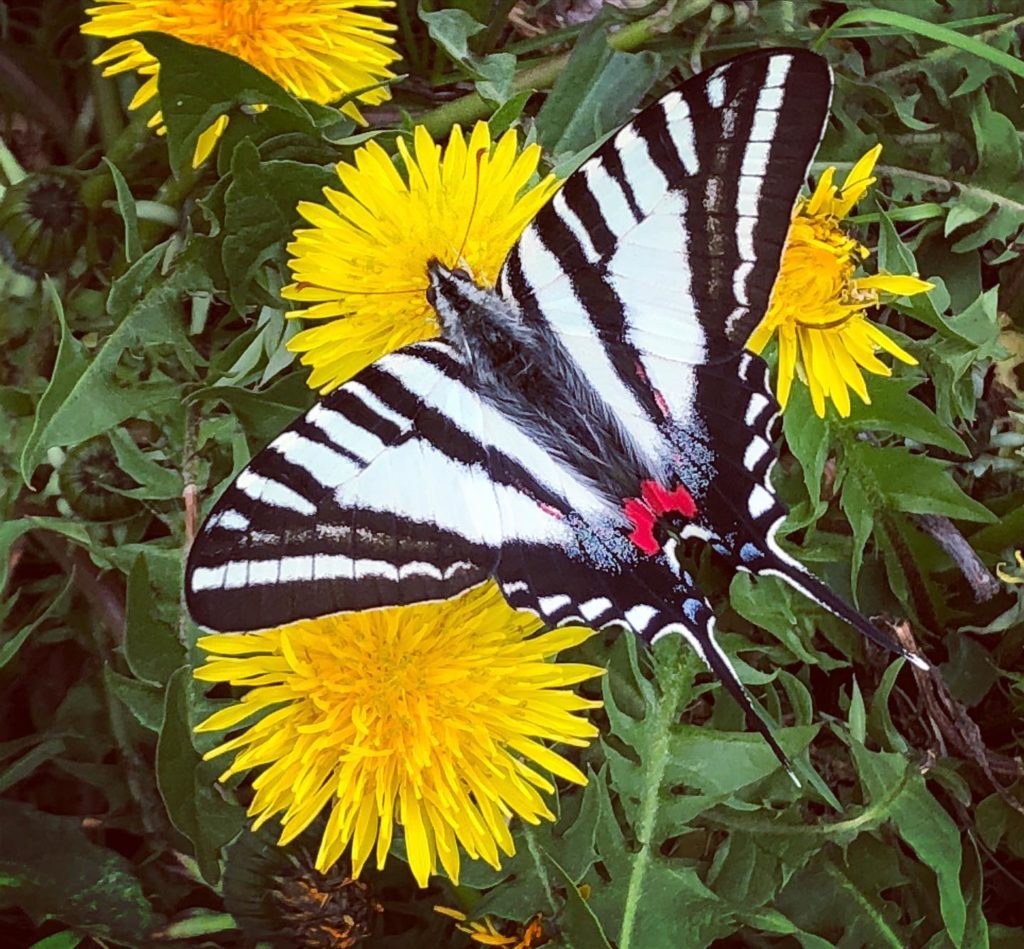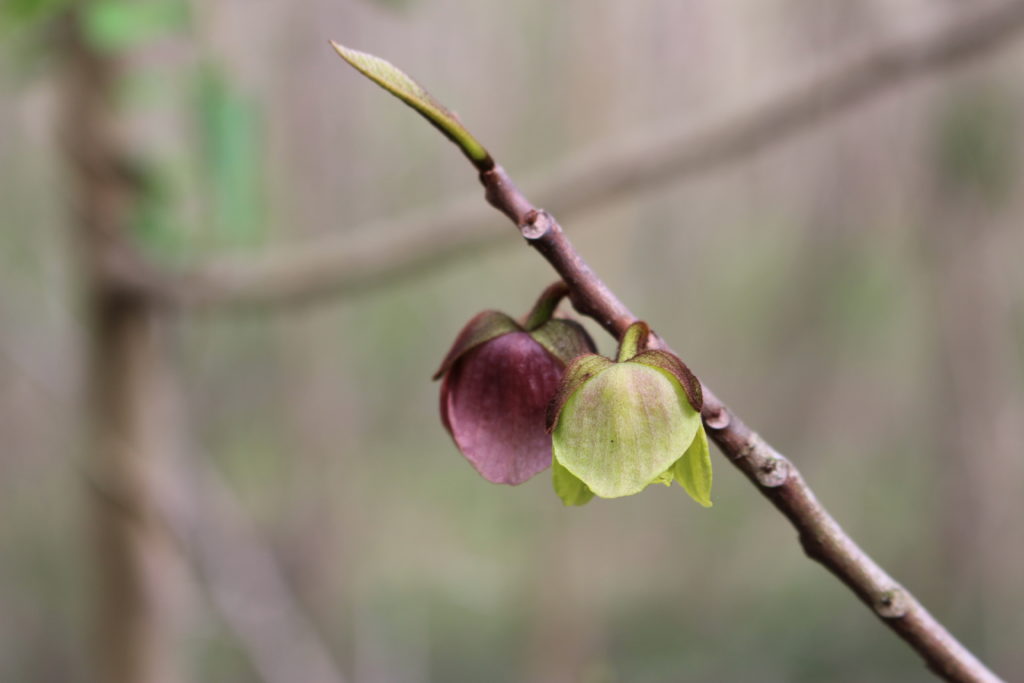
What’s in Bloom | Pawpaw
April 14, 2020
Pawpaw (Asimina triloba)
As we wander through the woods these days, we have spent a lot of time looking down, captivated by the spectacular spring ephemerals popping up on the forest floor. But our native pawpaw trees are a great reminder to look up too!
Pawpaws, well-known for their tasty fall fruit, are blooming right now in our area of Virginia. They exhibit a most striking flower that transitions from a green to pink to a deep maroon or brown color at maturity.
This darker color flower has a very intentional ecological purpose for the plant, to attract flies and beetles — pawpaw’s primary pollinators. In fact, the flowers also are known to give off a slight rancid odor – a fly’s favorite!
Pawpaw is the host plant for the Zebra Swallowtail (Protographium marcellus) larvae. And it offers not only nourishment to the larvae but also protection; natural compounds contained in the leaves and branches to protect the tree from mammal browse also protect the caterpillars that ingest the leaves making them unpalatable to birds.
In the past week we have seen several zebra swallowtails, freshly emerged from overwintering chrysalis. Before we know it, the pawpaw will leaf out and we will have to search for eggs and caterpillars too! .
We would love to hear if you have seen any zebra swallowtails in your area yet? If so, you likely have some pawpaws nearby.



Would Asimina Parviflora -Dwarf Pawpaw also be a host for the swallowtail butterfly? I found 2 Dwarf Pawpaws on my woodland path in Surry County VA.